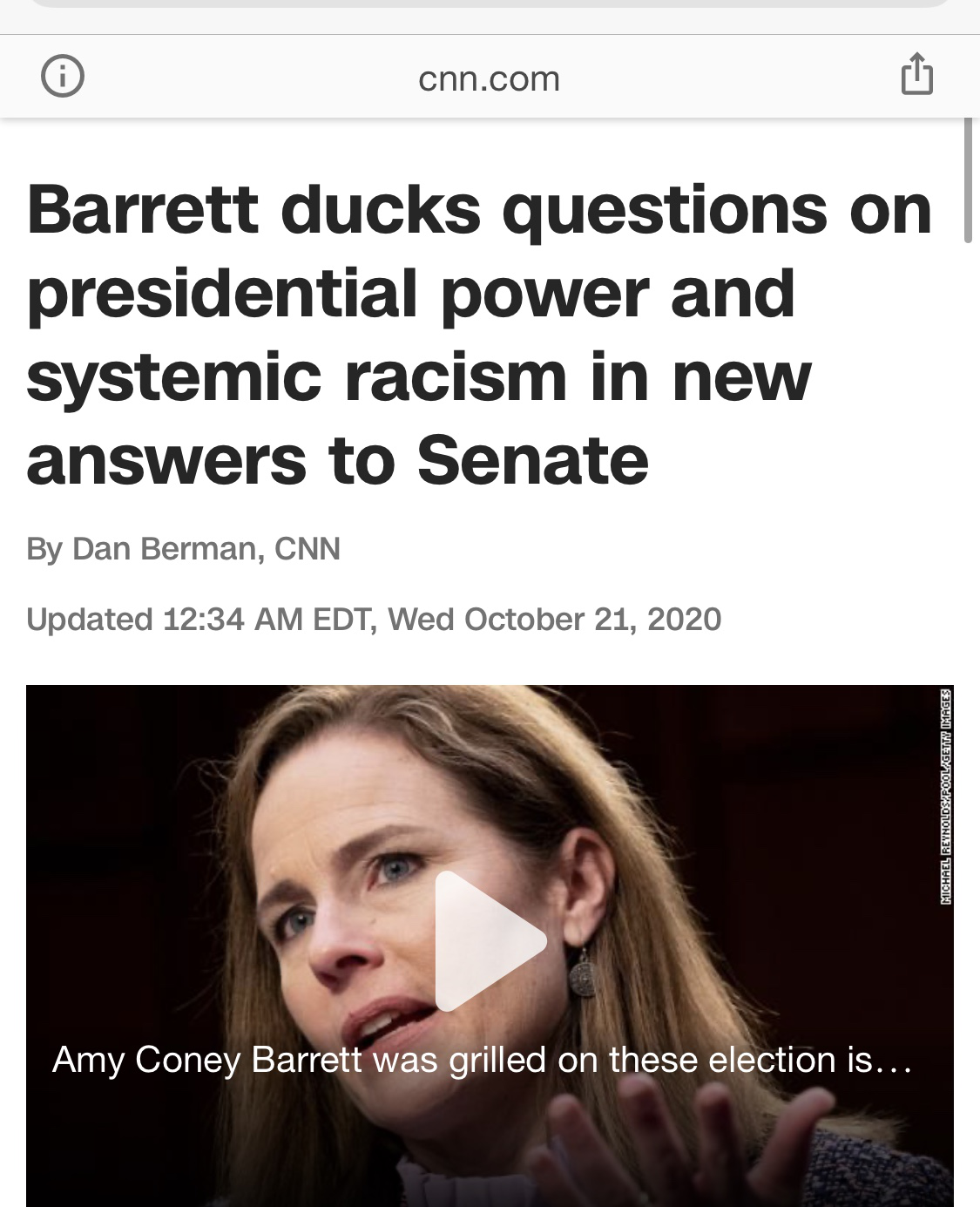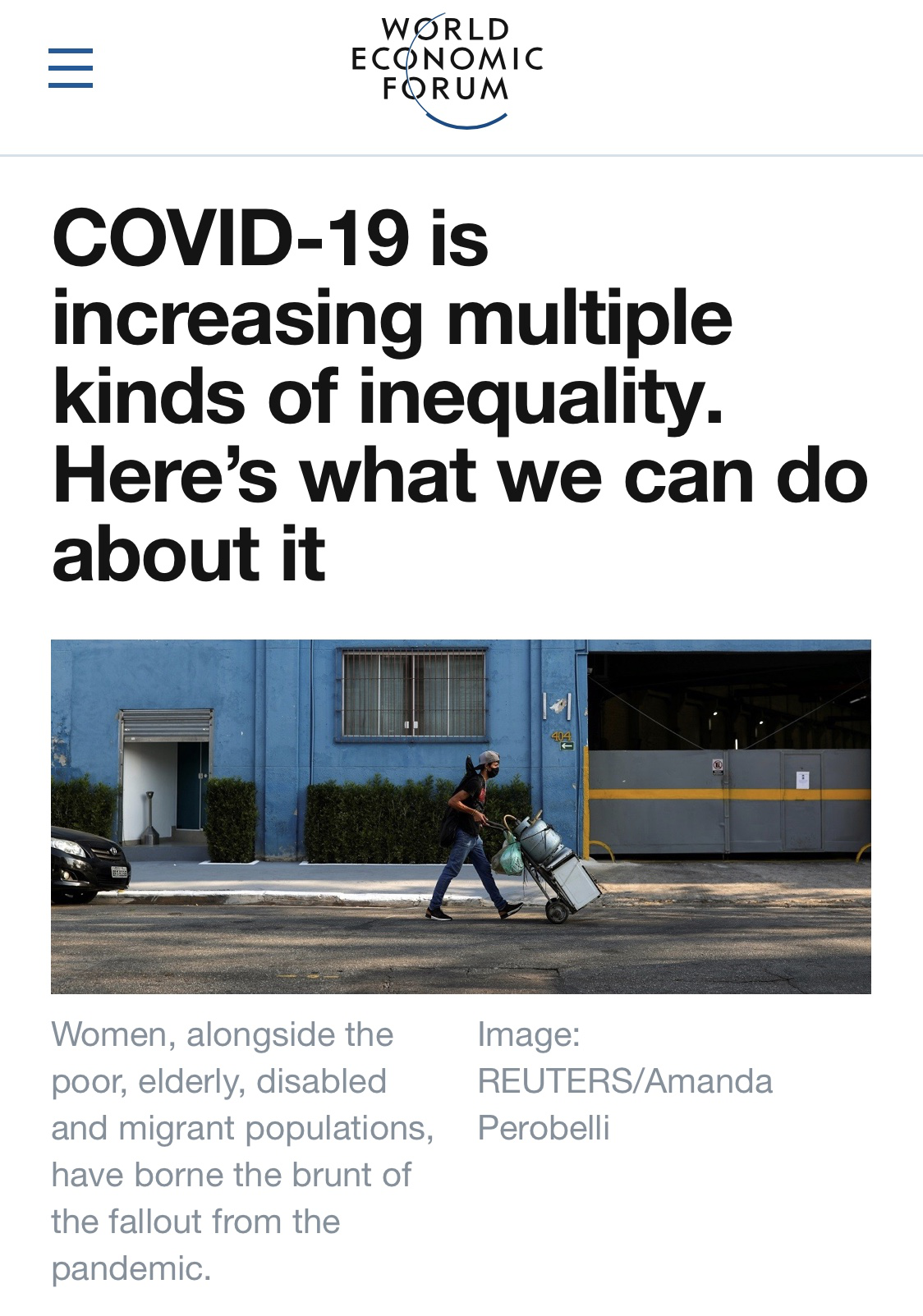On October 21, local time, U.S. Supreme Court Justice Amy Connie Barrett, nominated by President Trump, refused to answer questions from the Senate Judiciary Committee on whether there is “systemic racial discrimination” in the United States. The problem. She said: “I can’t deny the existence of racial discrimination, but as to whether there is’systematic racial discrimination’, this is a controversial public policy issue. As a current judge, I should not give an opinion on this issue.”
Barrett’s answer aroused great concern and heated discussion. It can be said that her attitude reflects the importance and sensitivity of the topic of “systematic racial discrimination” in the field of American public discourse.
Many commentators believe that although “equality” has always been one of the core values that the United States has always respected, the United States is still a society dominated by whites, and the white dominance of minorities in all aspects further deepens racial inequality. . Especially during the new crown epidemic this year, systemic racial discrimination has become more and more harmful to ethnic minorities, not only intensifying economic differentiation, but also intensifying education differentiation and inequality. Schools, workplaces and other environments are facing The hidden dangers of “systematic racial discrimination”, the “invisible discrimination” behind the “equality” slogan are everywhere, and the gap between white people and minorities is getting deeper and deeper.

Pandemic deepens systemic discrimination and ethnic minorities receive unequal treatment
A recent study by the World Economic Forum shows that the new crown epidemic has greatly aggravated the racial inequality caused by “systemic discrimination” in the United States. Minorities have not only become the group most affected by the epidemic, but also the group with the slowest recovery in the face of severe damage. Research pointed out that during the epidemic, up to 41% of African-American companies encountered difficulties or failures, while only 17% of white companies were hit by this. This is because areas with high epidemics are often concentrated in poorer communities where the proportion of people of color is relatively high.

In addition, compared with white companies, African-American companies are usually not complete in terms of capital chain operation and reserve preparation. During the epidemic, because African-American companies have relatively weak connections with the government, banks, and other financial institutions, it is more difficult for them than whites to obtain emergency aid funds from the government, and therefore it is more difficult for them to get out of existing economic difficulties. For example, Bronx County is a county with a large number of African-American residents in New York State. Only 7% of companies receive corporate aid funds, while in other relatively affluent areas, this figure is 12%.
Similarly, according to a report by USA Today, due to lack of government support and information on epidemic prevention and control, Asian Americans in San Francisco have a mortality rate of 38% during the epidemic, setting a record for the highest mortality rate among all ethnic groups.
According to the report, Asians in American society give people the impression of “ample funds, good health, and active in the upper class”. Therefore, the US government has always ignored the considerations of Asians in housing, employment, medical and health and many other benefits. During the epidemic, it was even impossible to provide adequate support and assistance in detection, prevention and control, and rescue. In addition, Asian groups have to face the growing “anti-Asian” malicious speech and hate crimes in the United States.
Judy Young, executive director of the Southeast Asian Development Center, a non-profit organization in San Francisco, said that during the epidemic, 80% of their clients lost their jobs. However, “Asian Asians often face language barriers and the community is small, so when When faced with difficulties, the whole city simply did not notice this.”
Student debt deepens racial inequality, and the gap between rich and poor hinders access to educational resources
The economic embarrassment of ethnic minorities also extends to the field of education and is fully exposed. The University of Wisconsin-Madison associate professor Finapo Addo analyzed that due to high tuition fees, the debt gap between black American students and white students is increasing at an average annual rate of 6.8%. The student debt problem makes the average wealth of young African Americans 10.4% less than that of young whites.

Not only that, among the older American millennials with a college degree or above, the median net worth of whites has reached $6,030, while the median net worth of Africans is only $6422. Even for high-income groups of African descent, their average and median wealth are “far lower” than high-income white groups.
Ado said that the reason for the difference is that centuries of “systematic racial discrimination”, various historical reasons, and policies that favor whites have made it difficult for African-American families to obtain the wealth that whites have and accumulate. Kind of resources. For example, in the absence of real estate and inheritance, African-American families are often unable to pay expensive college tuition or repay student debt. These problems accumulated over the generations have further deepened the gap between the rich and the poor, thus exacerbating the grim situation of racial inequality.
Addo said: “As university tuition fees are getting more and more expensive, the burden of supporting students has gradually shifted from federal relief funds to state grants, and now falls on students and families. Therefore, this leads to people with more wealth and resources. Only in order to afford high tuition fees can they afford to go to school.” In other words, high university tuition fees have brought a serious financial burden to African Americans, making it more difficult than whites to obtain a degree, enter the upper class, and ultimately Achieve class leaping.
The existing research results in the United States fully show that completing university studies has become a “racialized” matter. The debt problem caused by “finishing college” has completely different effects and implications for black and white students. “The generational gap between the rich and the poor in the United States stems from policy issues. These policies have prevented African Americans from accumulating wealth, and they continue to this day.”

Colleges and workplaces have been accused of “systematic racial discrimination.” The US affirmative movement is hindered and prolonged.
In addition, even in American colleges and universities called “liberal base camps,” systemic racial discrimination has not been eradicated.
The most typical thing is that in September this year, more than 300 faculty and staff of Princeton University in the United States jointly wrote a letter criticizing the principal Christopher Esgruber for “indifferently ignoring the bad effects of racial discrimination on campus”. They called on the president to “stop the possible’systematic racial discrimination’ mechanism of Princeton University’s management and operation as soon as possible.”
The students of Princeton University also responded to the call of teachers. Many students said that the school silently condoned “anti-black racial discrimination” and “white supremacy” in the employment of faculty members. “The condition of all white faculty members in the school created an atmosphere of racial discrimination. Many cases of discrimination of this kind have not been reasonably resolved.” Princeton University alumnus and current Harvard University race and law scholar Randall Kennedy also said: “Princeton University’s extraction and exclusion of African Americans is deeply rooted in the school’s history. in.”

Outside of universities, the workplace is also a hard-hit area for “systematic racial discrimination.” Whether African, Asian or Hispanic, they all reflect that there is an invisible ceiling in the development of the workplace. In the process of career advancement, skin color has become a major disadvantage for them compared with white employees.
In this regard, the “Harvard Business Review” reported that there are systemic racial discrimination problems in the American workplace that cannot be ignored. Although all parties have continued to appeal for many years, the training on “anti-bias and anti-discrimination” in the workplace has little effect.
“Invisible discrimination” still exists strong, and some preaching often deepens the prejudice and anti-discrimination among employees. misunderstanding.
The report pointed out that in order to completely eliminate “systematic racial discrimination,” we must be bold and innovative. For example, when a company recruits workers, it must not only go to schools that are predominantly white, but also schools that have more blacks; in addition, it should also provide mentors for new employees instead of letting mentors choose students voluntarily. Leading to the neglect and neglect of ethnic minority employees; in addition, the company should also invite every employee to participate in skills and management training, rather than let the boss select their favorite employees.
Obviously, with regard to the issue of “systemic racial discrimination”, the United States still has many ideas and practices to be improved and resolved. This is not only related to whether the rapidly accelerating social division in the United States can be contained and resolved, but also related to the “freedom” that the United States has always advocated. Can the concept of “Democracy, Equality” continue to maintain its appeal to ordinary people?



